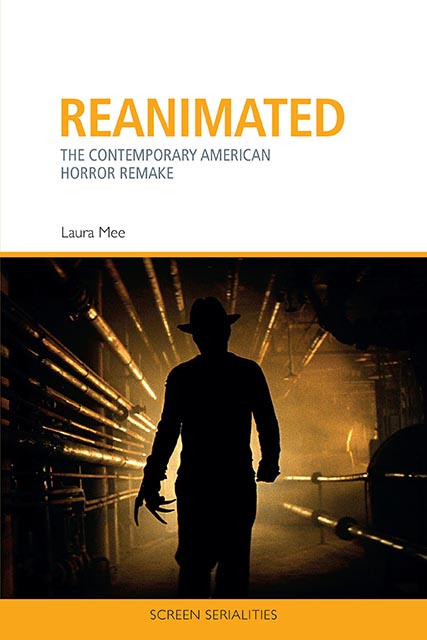Book contents
- Frontmatter
- Contents
- List of Figures
- Acknowledgements
- Chapter 1 Horror Reanimated: The Rise of the Remake
- Chapter 2 Defining and Defending the Horror Remake
- Chapter 3 Re-Writing Horror Mythology in the Platinum Dunes Reboot
- Chapter 4 Distinction and Difference in the Slasher Remake
- Chapter 5 Cultural Anxieties and Ambiguities in Post-9/11 Remakes
- Chapter 6 Gender and Genre in the Rape-Revenge Remake
- Conclusion. ‘The Devil Never Dies’: Recent Horror Remakes
- Bibliography
- Films and Television Programmes
- Index
Chapter 6 - Gender and Genre in the Rape-Revenge Remake
Published online by Cambridge University Press: 10 August 2023
- Frontmatter
- Contents
- List of Figures
- Acknowledgements
- Chapter 1 Horror Reanimated: The Rise of the Remake
- Chapter 2 Defining and Defending the Horror Remake
- Chapter 3 Re-Writing Horror Mythology in the Platinum Dunes Reboot
- Chapter 4 Distinction and Difference in the Slasher Remake
- Chapter 5 Cultural Anxieties and Ambiguities in Post-9/11 Remakes
- Chapter 6 Gender and Genre in the Rape-Revenge Remake
- Conclusion. ‘The Devil Never Dies’: Recent Horror Remakes
- Bibliography
- Films and Television Programmes
- Index
Summary
In the previous chapter, I examined the ways in which key films from American horror cinema's ‘golden age’ were remade for a contemporary audience. Other remakes of this era's films embraced new genre modes while also adapting for changed societal and cultural values – in this instance, through their representations of gender. 1970s rape-revenge films were popular among exploitation audiences, but their more marginal cult followings and initial critical vilification mean that they may not have been obvious choices for the remake treatment. Yet, two films in particular, The Last House on the Left and I Spit on Your Grave, remade just over a year apart, exemplify how filmmakers adapt content to be more acceptable to a broader horror viewership. Changes were made to narrative, tone and aesthetic so as to match contemporaneous genre trends, and the remakes also adapted their portrayal of female protagonists in order to address – with varying success – issues of representation in the original films. These remakes, while rooted in their exploitation origins, are coded explicitly as horror films, introducing heightened suspense and common horror tropes, notably the inclusion of explicit, visceral scenes of torture that enable the films’ potential alignment with torture porn. The evolution of horror cinema throughout the 2000s had featured a rise in brutal violence and explicit gore, and a number of plots focused on retributive justice and personal revenge. The state of the genre at the end of the decade provided an ideal opportunity for remaking controversial films that might otherwise have been difficult to market to a wider horror audience, and we can understand the popularity of torture porn as a framework for the production, marketing and reception of remakes such as I Spit and Last House.
Reactions to both films were largely negative, a mixed response of indifference, derision and disgust. Aside from a handful of positive reviews, many on horror websites (see, for example, Hayes 2010, Jones 2011, Weinberg 2009, Miska 2009b), the new versions attracted criticism which, despite often acknowledging improvements on the originals’ form and aesthetic – for example, in terms of their performances, scripts and cinematography – repeatedly drew attention to the perceived pointlessness of remaking the films.
- Type
- Chapter
- Information
- ReanimatedThe Contemporary American Horror Remake, pp. 137 - 160Publisher: Edinburgh University PressPrint publication year: 2022



